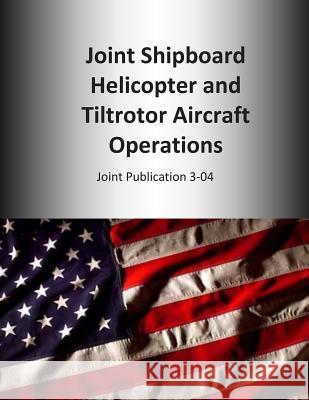Joint Shipboard Helicopter and Tiltrotor Aircraft Operations: Joint Publication 3-04 » książka
Joint Shipboard Helicopter and Tiltrotor Aircraft Operations: Joint Publication 3-04
ISBN-13: 9781500529635 / Angielski / Miękka / 2014 / 124 str.
Unlike some joint operations where the Services are assigned operational areas and interact with each other on the margins (via communications channels or across boundary lines), joint shipboard helicopter and tiltrotor operations require continuous interaction, coordination, and teamwork to accomplish the simplest of tasks. Poor interaction and coordination can result in personnel injury and equipment damage. If not quickly identified and mitigated, Service differences in terminology, training, equipment, and standing operating procedures will be magnified and may develop into significant challenges. When embarking other Service helicopters/tiltrotor aircraft on Navy ships, there are three major ship mission trade-offs to consider: displacement of naval aircraft; removal of the ship from its place in the amphibious ready group or carrier strike group; and degradation of ship and/or embarked unit mission capabilities resulting from emission control (EMCON)/hazards of electromagnetic radiation to ordnance (HERO) requirements, wind limitations, and/or geographic location requirements. Joint force commander (JFC) considerations also include the impact of embarking other Service helicopters or tiltrotor aircraft on a small aircapable ship (ACS) (such as a cruiser or destroyer) or on an aircraft carrier or amphibious assault ship.
Zawartość książki może nie spełniać oczekiwań – reklamacje nie obejmują treści, która mogła nie być redakcyjnie ani merytorycznie opracowana.











